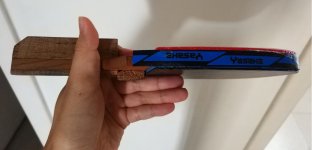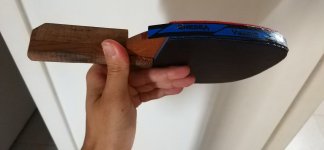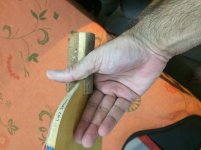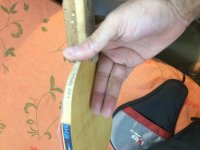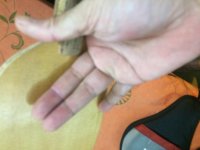I had my second week of jpen attempt.
My FH stroke is still a bit strange due to different racket angle from shakehand. I can adjust it on drills but I have difficult to do the same on matches, it is not automatic yet. I think I can partially solve this problem by sanding the wing where my index finger is positioned, so I would be able to close racket angle more easily. But I don't want to sand it because it will look uglier hahaha. I will try for a few more weeks to see if I can adjust my mechanics.
My FH stroke is still a bit strange due to different racket angle from shakehand. I can adjust it on drills but I have difficult to do the same on matches, it is not automatic yet. I think I can partially solve this problem by sanding the wing where my index finger is positioned, so I would be able to close racket angle more easily. But I don't want to sand it because it will look uglier hahaha. I will try for a few more weeks to see if I can adjust my mechanics.






